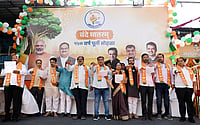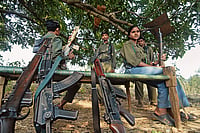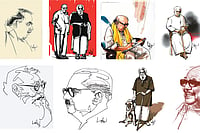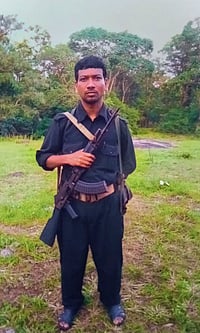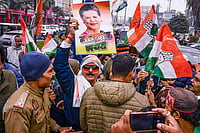CPI (ML) is contesting 20 of Bihar’s 243 Assembly seats
In 2020, the party tallied 12 MLAs, which is it now hoping to improve.
It is now a crucial component of the Rashtriya Janata Dal (RJD)-Congress-led opposition alliance, Mahagathbandhan.
CPI(ML)(Liberation), Bihar’s largest leftist party and a crucial component of the Rashtriya Janata Dal (RJD)-Congress-led opposition alliance, Mahagathbandhan, is contesting in 20 of Bihar’s 243 assembly seats. It’s working hard to improve its 2020 tally of 12 MLAs. The party general secretary, Dipankar Bhattacharya, spoke to Snigdhendu Bhattacharya on the eve of the first phase election amidst his very tight schedule.
Bihar has been a hotbed of caste-based conflict, often violent, including over elections. How prevalent or relevant is caste conflict at present?
I would not call the present situation a conflict, but caste-related tension has gone significantly up and it can be felt. The recent murder of Dularchand Yadav (Jan Suraj Party worker) in Mokama is an example, especially on how state minister Lallan Singh backed Anant Singh, a key accused in the murder. It reflects the caste-based polarisation and tension.
Do you mean caste-based consolidation has intensified?
Yes, the so-called Mandal camp or the Bahujan Samaj had earlier become divided into many smaller groups during Nitish rule. The non-Yadav backward groups, the EBCs, and Dalit groups like the Paswans had more or less aligned with the National Democratic Alliance (NDA) camp. But now, the BJP’s desperation for grabbing Bihar’s power has robbed it of its pro-backward classes mask. The feudal upper caste dominance is back in the BJP. So, there is a general trend of caste-based consolidation.
What are the symptoms of this change?
Of the BJP’s 101 candidates, there is not a single Muslim. And 49 of them belong to upper castes, whereas upper castes make up only 15-16 percent of Bihar’s population. The essential character of the BJP, which it tries to cover up, is getting exposed in a very glaring manner.
How does that reflect on the ground level when it comes to campaign and poll management?
Let me give you an example. In Tarari assembly constituency in Bhojpur district, our candidate, Madan Chandravanshi, was assaulted thrice on a single day during his campaign through upper caste-dominated villages. The key factor is that the feudal upper caste people still cannot accept a lower caste political activist campaigning in an upper-caste dominated village.
This kind of tension prevailed in the 1960s, ‘70s and 80s but had eroded after the 2000s. That has now revived with intensification of caste-based polarisation. It may or may not result in violence, but the tension is palpable. There is discomfort even among some BJP and Janata Dal (United) leaders from backward castes.
Why did caste-based polarisation suddenly intensify?
The BJP is in a hurry to grab power on its own. It’s their desperate attempt to dominate Bihar. They have a predominantly upper caste and feudal social character. They try their best to hide it by highlighting how Prime Minister Narendra Modi comes from a backward caste and by promoting some regional leaders from backward castes, for example Samrat Chaudhury in Bihar. But in Bihar, they are evidently looking for a feudal restoration and that is essentially upper caste-dominated.
Land was your key priority and there were times where the land struggles led by your party also came in conflict with a section of Yadav landowners, who were the Rashtriya Janata Dal (RJD)’s key support base. How are you aligning with them now?
Our land related conflicts happened mostly with the upper caste feudal forces. Yes, with the gradual empowerment of the Yadavs, some of them, too, started owning large tracts of land and there remained a social conflict between the landless and the upwardly mobile Yadavs. But the major conflict was mostly with the upper caste feudal forces. And now, the rise of feudalism with the rise of BJP is obviously a greater threat to the people.
Our alliance with the RJD does in no way mean we are sacrificing the land struggle. Our manifesto includes the implementation of the Debabrata Bandyopadhyay commission, which recommended land redistribution.




















